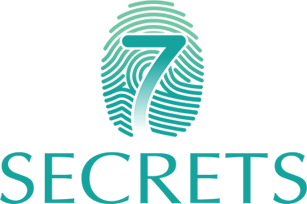09/01/2018
Interview the expert
DR SEAN LANIGAN, Consultant Dermatologist MD FRCP DCH
 Dr Lanigan is a Regional Medical Director and Co-Founder of the Medical Standards Committee at sk:n limited. Sk:n has 48 clinics and is the largest provider of aesthetic laser treatments throughout the UK. Dr Lanigan was President of the British Cosmetic Dermatology Group of the British Association of Dermatologists from 2015-2017. He was Consultant Dermatologist and clinical lead at the Birmingham Regional Skin Laser Centre from 2001-2009. He has over 160 scientific medical publications including 2 text books, and 16 book chapters. He was Editor in Chief of Lasers in Medical Science for 8 years.
Dr Lanigan is a Regional Medical Director and Co-Founder of the Medical Standards Committee at sk:n limited. Sk:n has 48 clinics and is the largest provider of aesthetic laser treatments throughout the UK. Dr Lanigan was President of the British Cosmetic Dermatology Group of the British Association of Dermatologists from 2015-2017. He was Consultant Dermatologist and clinical lead at the Birmingham Regional Skin Laser Centre from 2001-2009. He has over 160 scientific medical publications including 2 text books, and 16 book chapters. He was Editor in Chief of Lasers in Medical Science for 8 years.
1. If we are thinking of having a laser treatment, what questions should we ask our clinician to gain a level of understanding of their competence and/or what qualifications should give us confidence in them? All laser users should have taken a course called ‘Core of Knowledge’ This gives them the knowledge to operate lasers safely for themselves, their staff and their patients.The British Medical Laser Association (BMLA) has produced a document on Standards in Laser Treatment. The clinician should be knowledgeable of this. There are no specific qualifications but the clinician should be able to produce evidence of competence. All clinicians should participate in annual appraisal which includes their laser work. They should keep up to date in their field. They should tell you how many cases of your condition they have treated in the past year, the outcomes and any side effects.
2. What are the trickiest skin conditions to treat and why?
Pigmented conditions particularly melasma and post inflammatory pigmentation are the trickiest. They can fail to improve with many if not all treatments in some cases and can darken paradoxically. Darker skin types are more prone to darkening after treatment.
3. Can you talk us through laser lip enhancement. Is it temporary and if so how long can we expect it to last. What are the benefits of using lasers for lip enhancement rather than injectable fillers and is it more or less painful?
Laser lip enhancement is said to occur after collagen stimulation from infra red lasers such as the Nd:YAG laser. This laser has been used for facial rejuvenation with, in my opinion, mixed results. Long term, significant improvement is unlikely, for facial rejuvenation fractionated and ablative lasers are more likely to produce satisfactory results. I know of no scientific studies to support laser lip enhancement and would not recommend it at this time.
4. Significant progress has been made in recent years on ‘port wine stain’ birthmarks but can you share what advances have been made on the much darker brown birthmarks?
There has been little progress in treating these birthmarks. Lasers, surgery and camouflage make up remain the main stay. New lasers developments such as Fractional lasers and Picosecond lasers may improve outcome but more research is needed.
5. For anyone considering laser treatments, cost is always a consideration. Can you give us an idea of what we can expect to pay on a couple of different procedures and how many visits are typically needed to achieve the desired results for each?
Treatment costs can vary widely for laser treatment and it is essential to have an accurate idea of costs prior to starting treatment. You may expect to pay a premium for senior ‘expert’ practitioners, and some devices are more costly to buy and run which will influence prices. For example intense pulsed lights (IPL) are significantly cheaper than picosecond lasers. The procedure costs can vary based on extent of treatment and number of treatments necessary. For example a mole removal or spider naevus can be usually treated in 1 visit, whereas tattoos, port wine stains and extensive facial red veins will require multiple visits. As a rough guide, facial telangiectasia could cost between £250 and £450 per treatment with 2-5 treatments needed. A facial treatment with the Fraxel laser could range from £500 to £800 with 1-5 treatments being needed. Follow up reviews and top up treatments should also be costed.
6. Regarding the human genome project, have any really key discoveries been made pertaining to your field?
Information from the Human Genome Project is proving invaluable in discovering genetic information about inherited skin diseases. This will enable scientists to investigate disease mechanisms and inheritance. It is hoped that this information may lead to novel treatments targeted directly at the genetic or molecular defect causing the disease. On a wider base information about skin ageing, sun damage and skin cancer is also becoming increasingly available.
7. If you gaze into your crystal ball, can you share what innovative treatments maybe on the horizon?
I suspect increased understanding of the biology of skin repair, ageing and wound healing will lead to some very exciting agents applied directly on to or through skin. Problems at present include penetrating through the skin barrier, efficacy and safety. It is probable that techniques such as microspheres, nanotechnology and combinations with devices such as fractional lasers will lead to significant developments in aesthetic dermatology.



 Dr Lanigan is a Regional Medical Director and Co-Founder of the Medical Standards Committee at sk:n limited. Sk:n has 48 clinics and is the largest provider of aesthetic laser treatments throughout the UK. Dr Lanigan was President of the British Cosmetic Dermatology Group of the British Association of Dermatologists from 2015-2017. He was Consultant Dermatologist and clinical lead at the Birmingham Regional Skin Laser Centre from 2001-2009. He has over 160 scientific medical publications including 2 text books, and 16 book chapters. He was Editor in Chief of Lasers in Medical Science for 8 years.
Dr Lanigan is a Regional Medical Director and Co-Founder of the Medical Standards Committee at sk:n limited. Sk:n has 48 clinics and is the largest provider of aesthetic laser treatments throughout the UK. Dr Lanigan was President of the British Cosmetic Dermatology Group of the British Association of Dermatologists from 2015-2017. He was Consultant Dermatologist and clinical lead at the Birmingham Regional Skin Laser Centre from 2001-2009. He has over 160 scientific medical publications including 2 text books, and 16 book chapters. He was Editor in Chief of Lasers in Medical Science for 8 years.